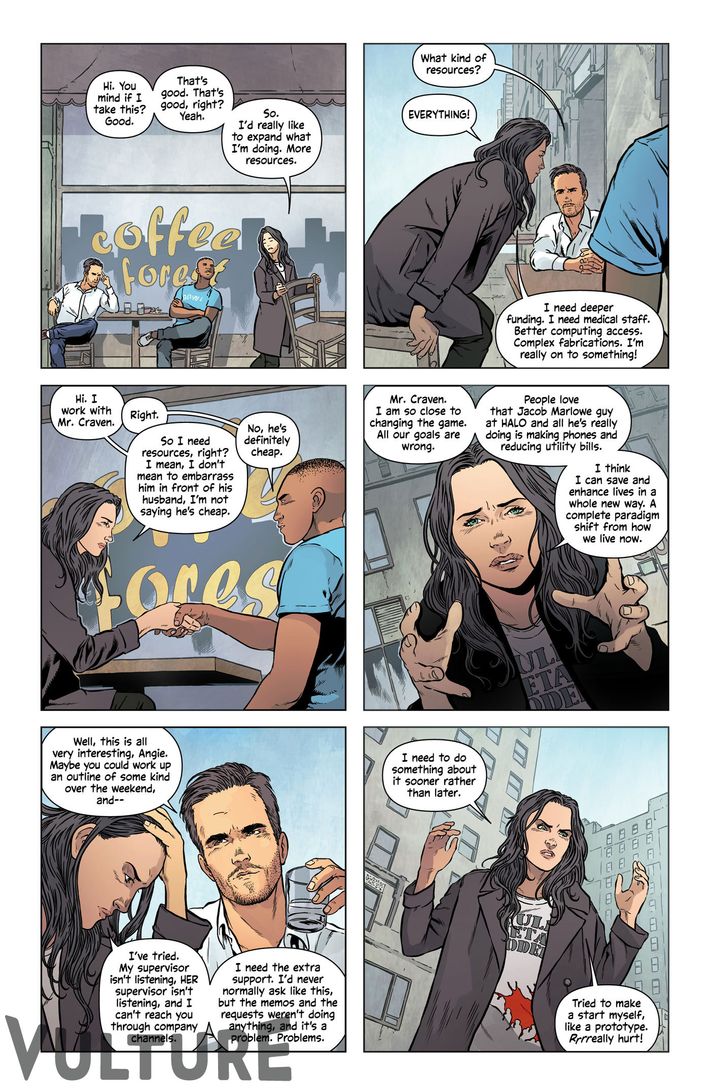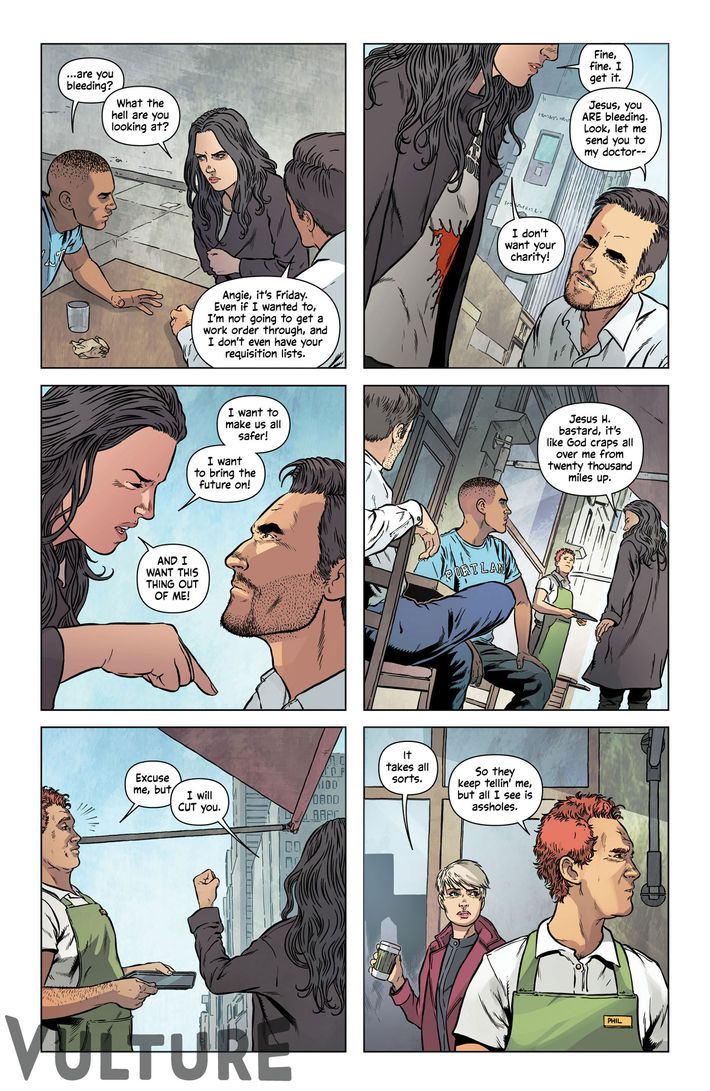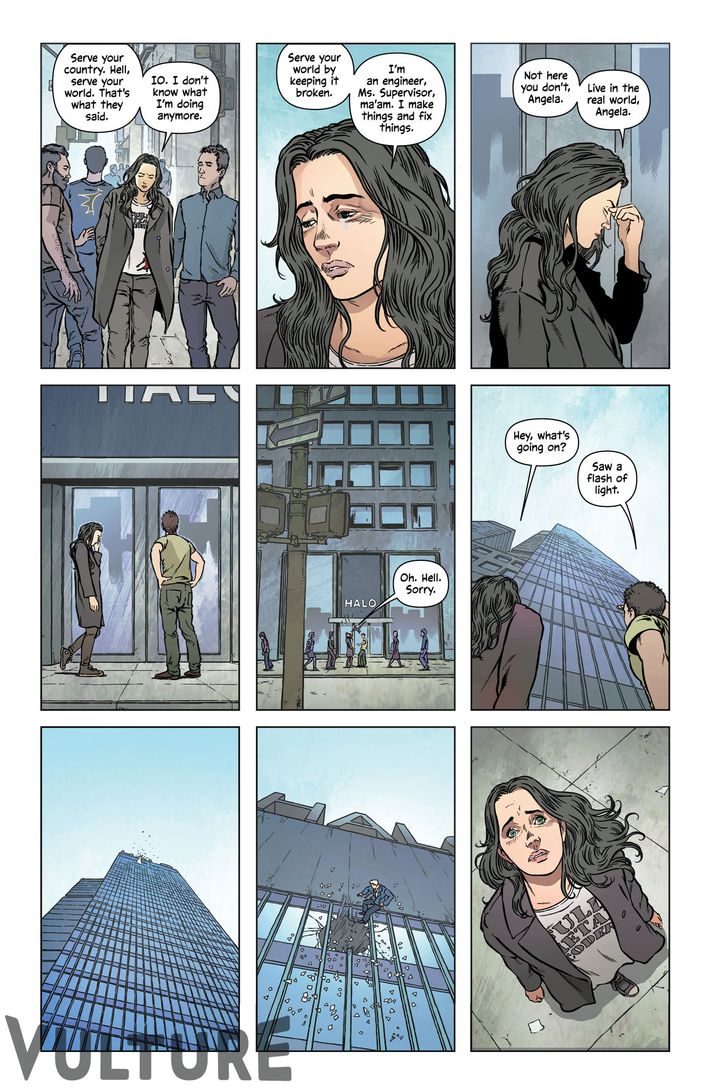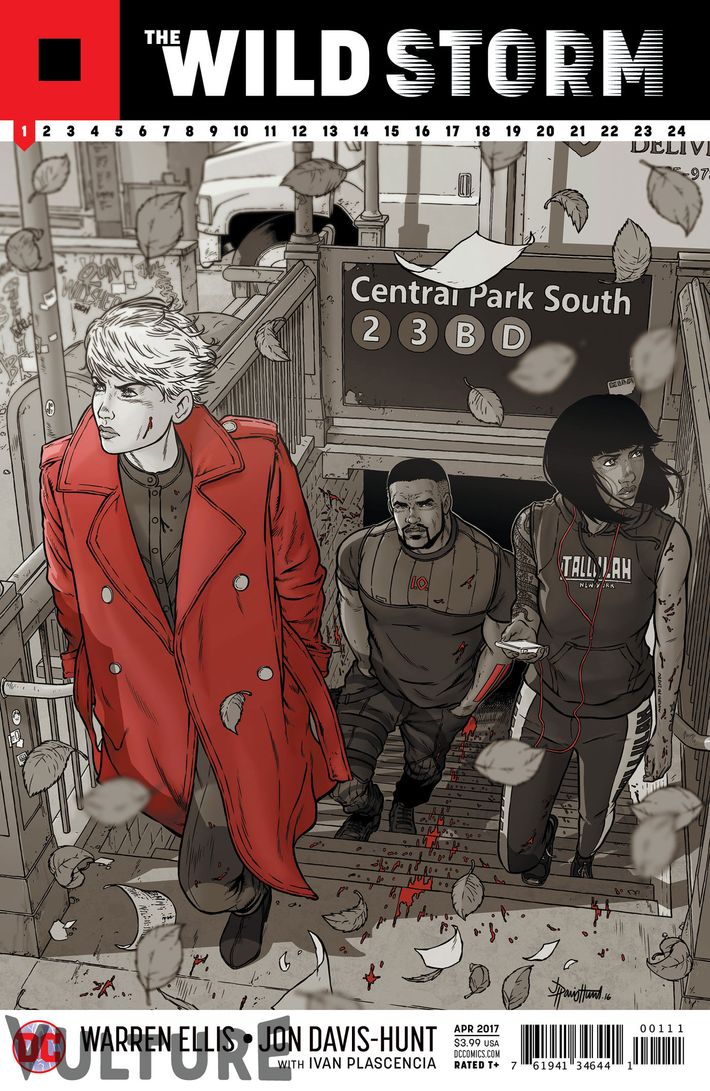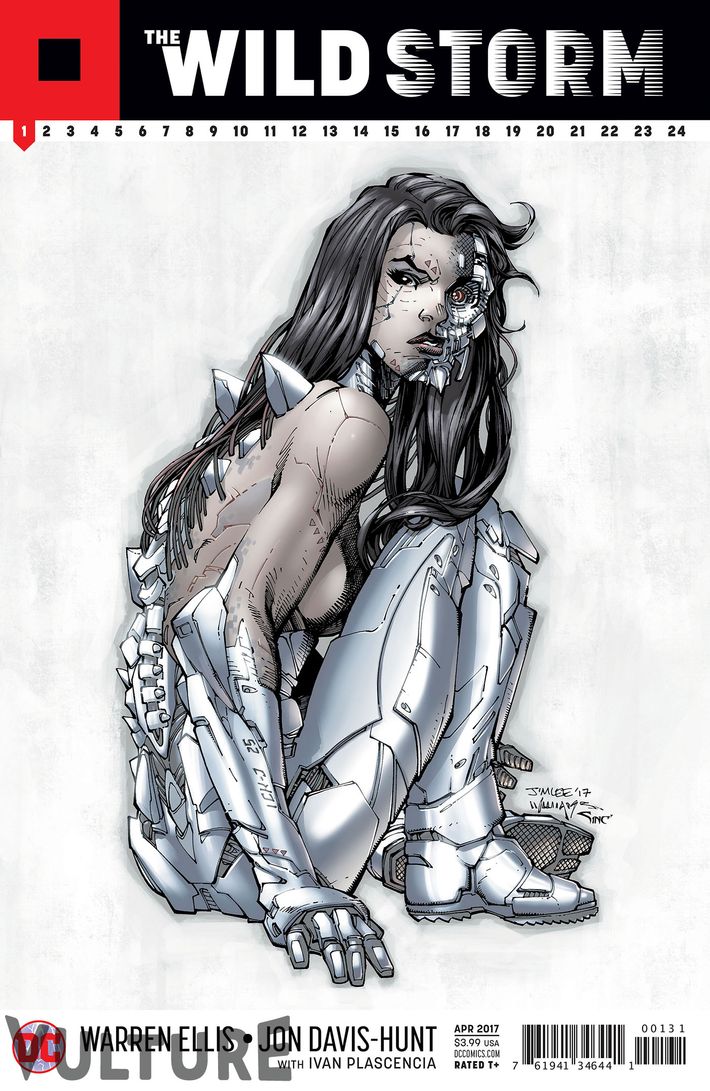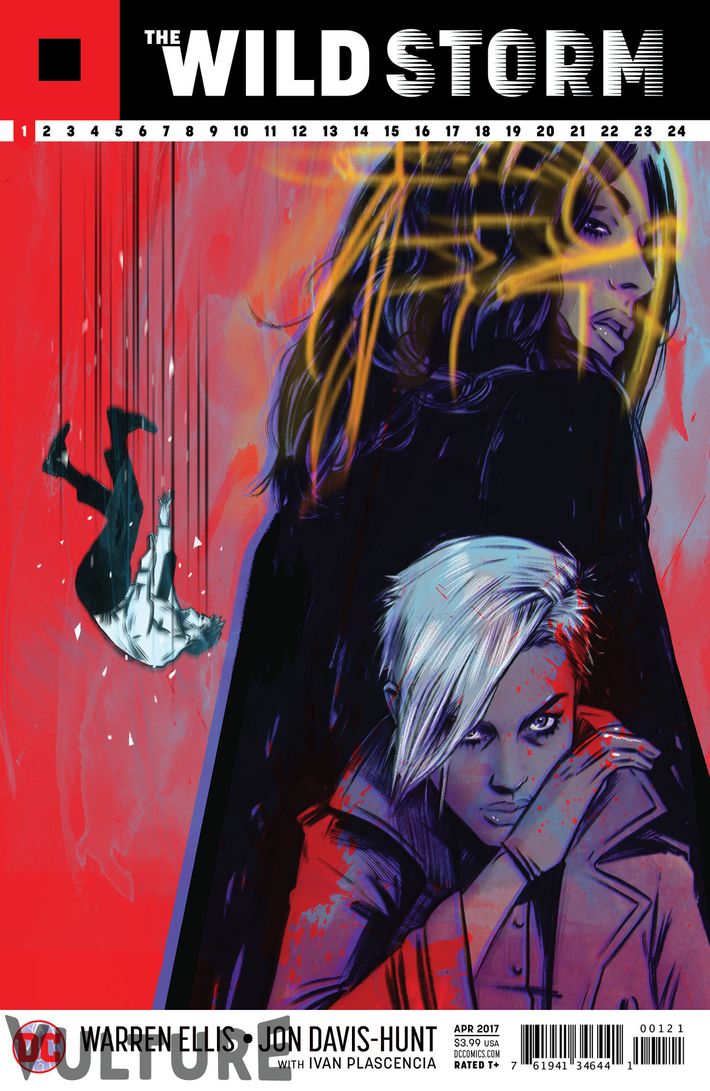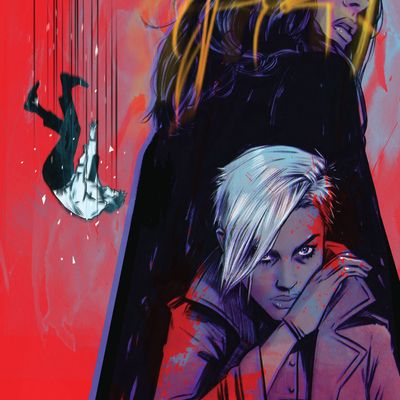
Two decades ago, a single publishing decision changed superhero fiction forever. Warren Ellis had been writing underappreciated comics in the U.K. and U.S. for about six years when the higher-ups at an Image Comics imprint called Wildstorm put him in charge of one of their flagship titles, a superhero-team series called Stormwatch. There, he and artist Bryan Hitch kicked off a new aesthetic approach to superhero storytelling, which they then brought into a sequel called The Authority, which went on to become the first truly cinematic superhero comic, which went on to become the foundation stone of modern superhero cinema. In many ways, the Superhero Boom began with Ellis and Wildstorm.
Now, that man and that brand are having an unlikely reunion. Last year, DC Comics — which now owns WildStorm and employs the imprint’s founder, Jim Lee — announced that it was bringing Ellis back into the fold and letting him run wild with the WildStorm universe’s characters, reimagining them for a new era. The project begins with a series called The Wild Storm, illustrated by Jon Davis-Hunt and Ivan Plascencia, which launches on Wednesday. Below, we have exclusive finished pages from the beginning of the first issue, as well as a conversation with Ellis about the unique power of Wildstorm’s mythology, how this new work relates (or doesn’t) to the versions of his Wildstorm characters that DC has used in its main universe, whether we’ll see his creations Apollo and Midnighter in the series, and the way Brexit plays into his conception of this reboot.
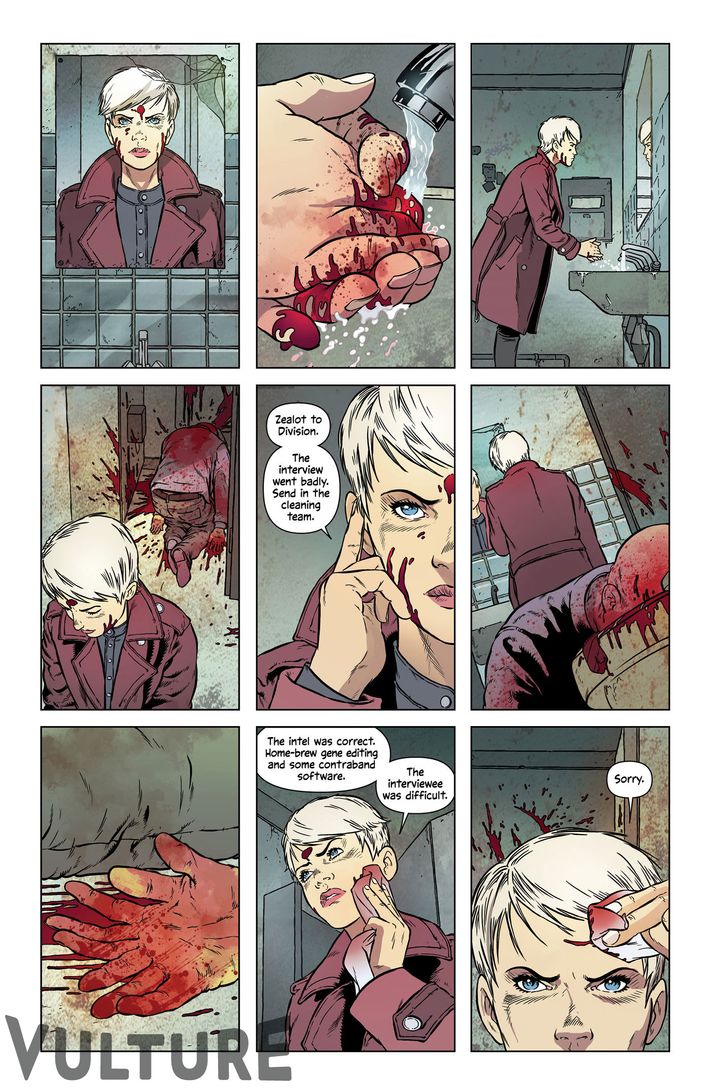
How closely did you follow the Wildstorm universe when it first launched at Image?
I didn’t follow it too closely — Image happened when I was fairly poor, for one thing, and also when I was developing my own approach and studying other things. I remember noting the unusually high production values — Image made great-looking comics, everybody else in commercial comics looked like they were hand-cranking a duplicating machine in comparison. And I was very taken with Jim’s art style on Deathblow — Jim had yet to really show the remarkable range he’s capable of.
How did you get brought on board for Stormwatch and your other pre-Authority series, DV8, back in the mid-’90s? And what were you tasked with doing on those titles?
As I recall, Marie Javins — my first editor at Marvel Comics, and now my editor on The Wild Storm — had told the editor-in-chief there that I was looking for work, as my time at Marvel felt like it was coming to a natural end. So I got asked to take over Stormwatch. I don’t recall if I wrote a pitch first or whether I actually just got started writing — Wildstorm was a pirate ship in those days, we didn’t have a lot in the way of rules. Jim had some fascinating ways of doing things. I remember the deal with covers was that covers didn’t come with much of an extra fee, but the cover artist could do whatever the hell they liked without notes or approvals. This was in the days when covers at other companies had to be approved by like six different people, from thumbnails to sketch to pencils to complete art. So, as a writer, all I had to do was amuse my artists and my editor.
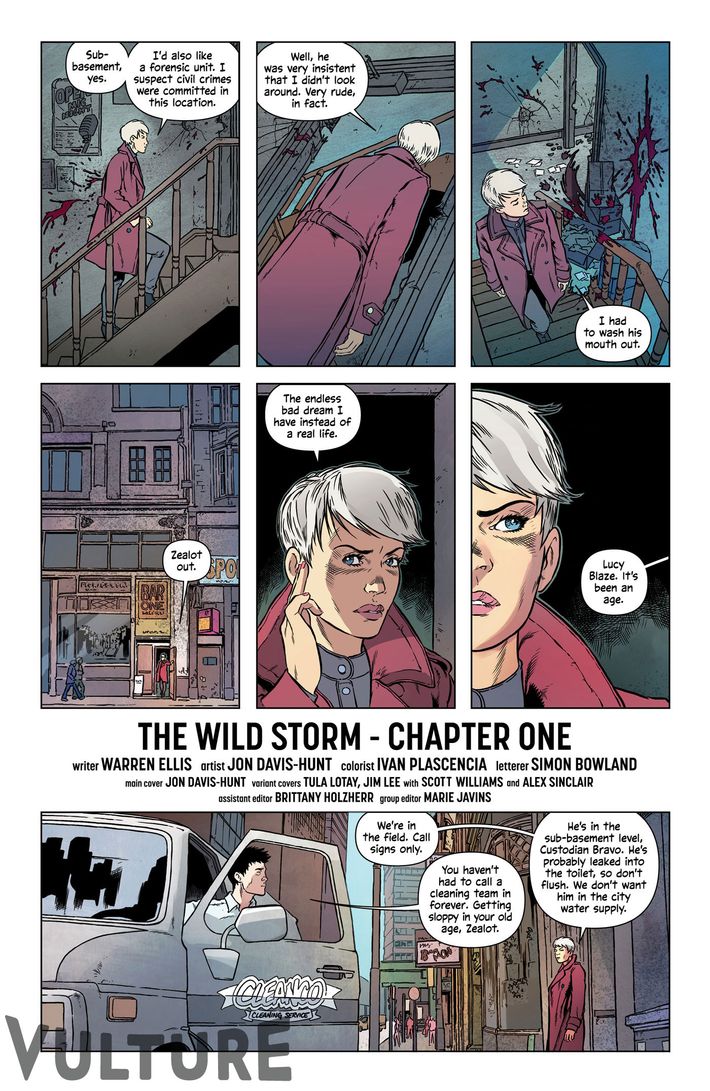
DV8 came later — I think it was the only time I had an actual No. 1 selling book — but I had a different editor on that, who figured the pirate ethos meant that he could completely rewrite whole chunks of my scripts and not tell anybody, and consequently that was the only book at Wildstorm I ever walked off of. Everyone else at Wildstorm was really good about it, so I stayed with the company and Stormwatch. Jim and his crew were always immensely kind to me.
Why did you transition Stormwatch into The Authority?
I discovered that no one was buying Stormwatch. And I called the office and said, hey, I just found out that nobody buys Stormwatch. They said, we know, but we all really love reading it, so we’re going to keep publishing it so long as you keep wanting to write it. Which was one of the most wonderful, kind things anyone in publishing had ever said to me. But I felt awful about it. They were burning money on my account. I just felt terrible. So I started thinking of ways to try and improve the situation and give something back to them so their investment would be worth something. That was the beginning of the process that lead to The Authority.
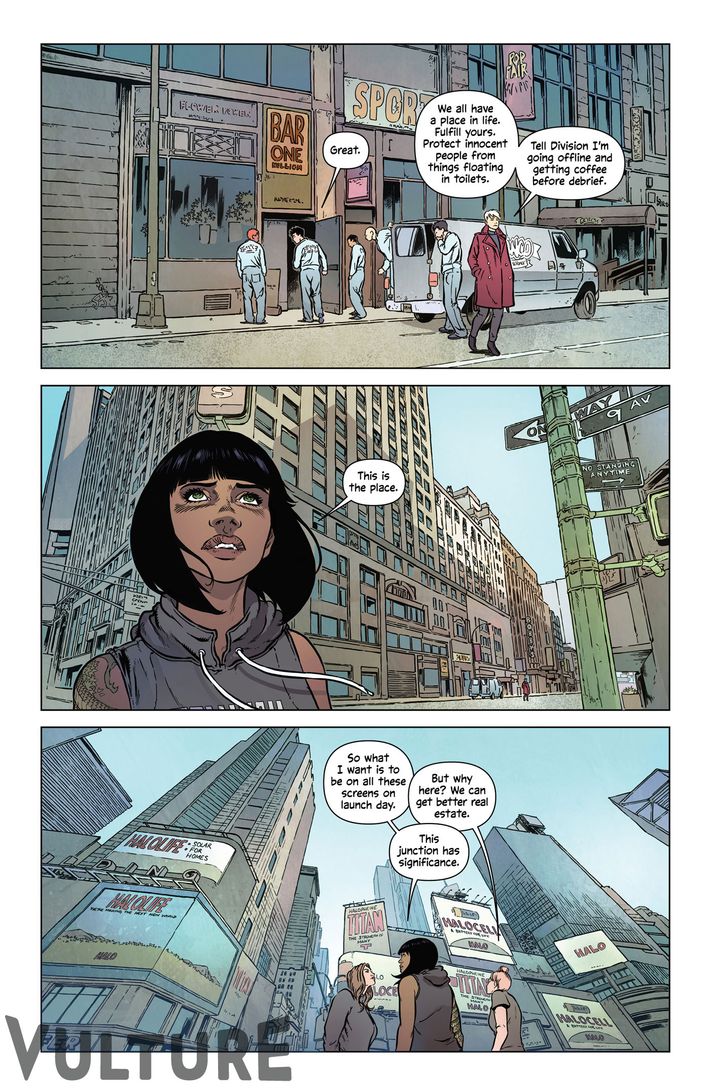
The next step was thinking a lot about Bryan Hitch’s pages from his brief stint on Stormwatch. Bryan was, as I recall, thinking about transitioning out of comics at the time — he has a second career in film and television — and he’s one of those rare artists who can utilize filmic language in comics and have it still be comics. Studying what he was doing in those issues, and thinking about the other things it suggested and the language he could turn it into, got me most of the rest of the way.
How did this revival come about? Did you ever expect that you’d return to these characters after Wildstorm petered out?
God, no. And, you know, I never really return to anything. Which, weirdly, was the thought process I was working through when I got the call. I’d started asking myself if never looking back had become dogmatic, and dogmatic thinking is never healthy thinking. So I was kicking this around intellectually, and wondering to myself what the value was of never returning to a thing or even looking back at it. And then Jim Lee calls me. I’d already reconnected with my old friend Marie Javins, now a group editor at DC, and we’d briefly discussed the idea of me going back to DC. And then Jim calls and says, hey, how about this? And what he asked me to do is pretty much the brief you’ve seen in the preview material — reboot and reinvent the line, with a free hand, creating four books through two years of publishing.
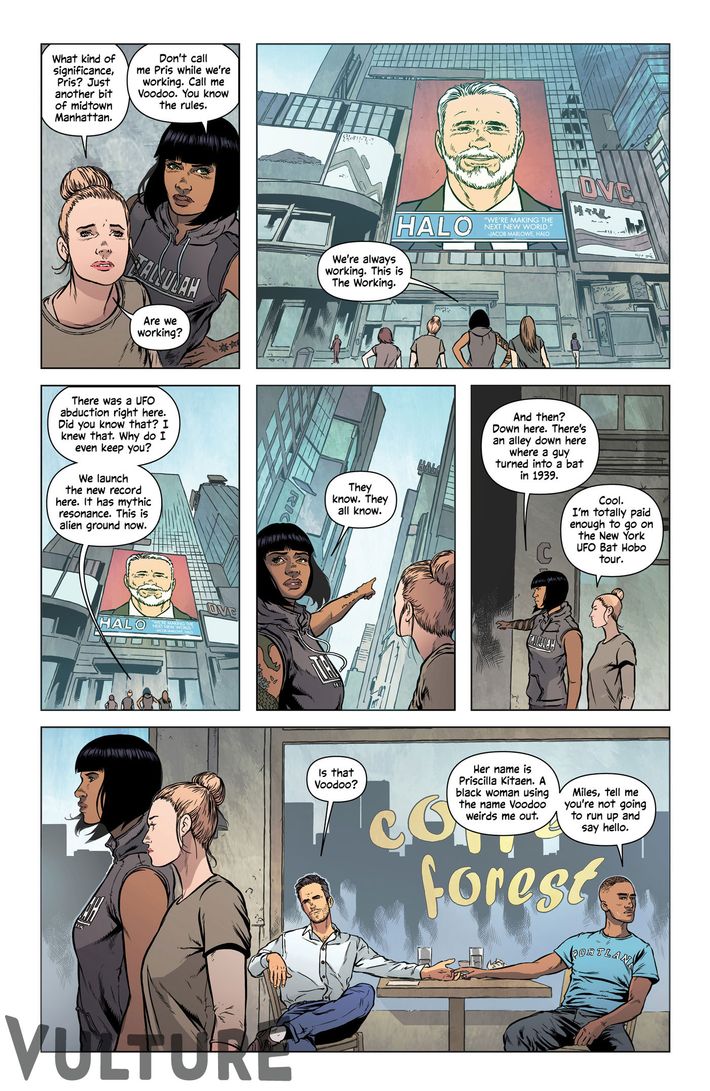
My immediate response was to think about the original books, which were really about all the stuff that Jim and his friends were interested in back then — conspiracies, alien intelligences, black ops — really paranoid stuff. And this was a year ago, pre-Brexit, pre–U.S. election. But it still felt right. I wrote the first six issues before Brexit, as I recall. I thought Britain would probably not leave the EU, but that the campaign would surface a lot of grim stuff. Which it did. And then Brexit. And I knew exactly which way the U.S. election would go. So, here we are a year later, with a book about secret power structures.
A lot of those early Wildstorm books were, on some level, about who really runs the world, and who gets crushed or warped in the small spaces between those giant cogs. Yes, they were big technicolor superhero books, I don’t want to oversell the metaphor or anything, but a lot of those characters who rubbed up against The True Nature of Things and got broken. So I said a lot of this to Jim, off the cuff, and that’s when he closed the deal and let me run with it, really.
Without giving away any plot details, what are you hoping to achieve with the revival?
For one thing, I want a new reader to be able to pick it up without any knowledge of the previous line and get a complete experience from it. This isn’t “25 years later.” This is a fresh start. What I’m doing is gathering up the entirety of the previous material, making it a coherent whole, and recasting it in the present day with an original story line that serves the legacy of the work and, hopefully, says something new.
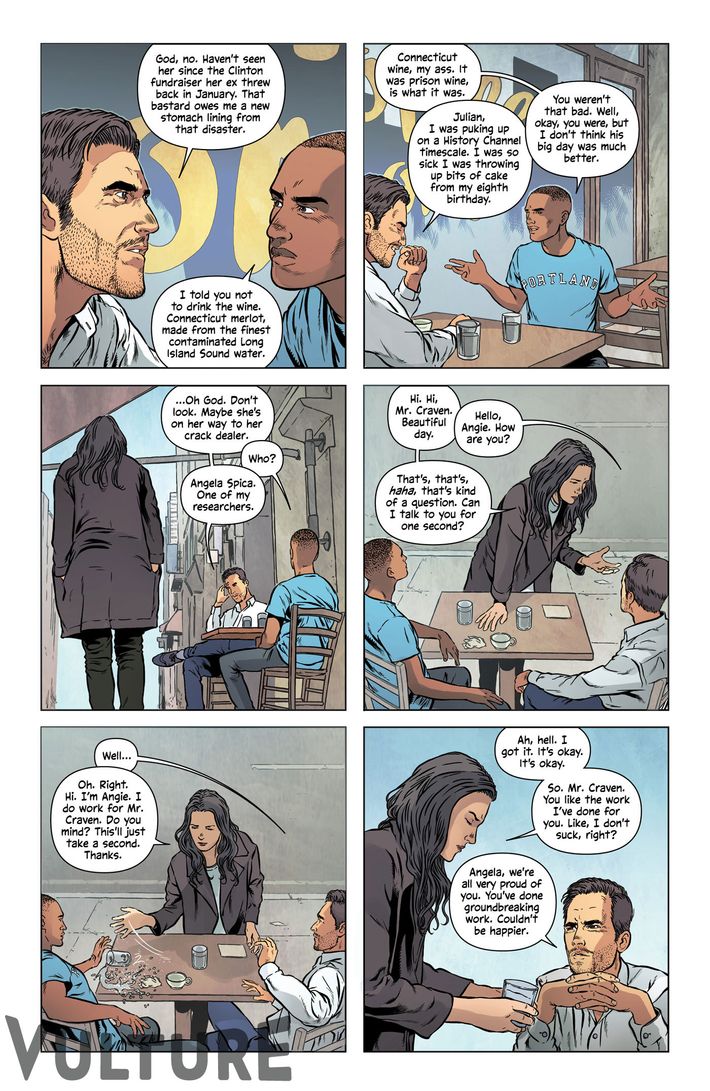
I mean, there were a lot of Wildstorm books. And remember I said it was a pirate ship? The world-building was all over the place. I had to sit down and write a fucking cosmology for this project. Jim Lee made me invent 12,000 years of intergalactic history and I will never forgive him.
You’ve worked within the context of reboots/reimaginings of existing intellectual property a fair bit in the past, such as newuniversal and your various Ultimate Marvel projects. What are the challenges and opportunities such projects present? How much archival rereading do you do before tackling them?
Usually, I do an absolute ton of reading. A signature of my superhero genre work is that I usually have to read all of it, because I very rarely looked at that stuff as a comics reader. Back in pre-internet days, companies used to have to ship me huge boxes full of photocopies of archival material, hundreds of pages at a time. I had to write Planetary just to get all that out of my head again. I have the unusual advantage this time of having previously written a lot of the archival material, and having previously spent so much time immersed in it that I still retain a lot of the details.
Writer Steve Orlando has been doing acclaimed stories in the mainstream DC universe starring your Wildstorm characters Midnighter and Apollo. What do you think of his work on them?
I think Steve is a fine writer, and the book he writes is a good and necessary thing. So, early in the process, I made sure everyone knew I didn’t want this to extinguish Steve’s book. I’m making use of the DC multiversal structure. This is, if you like, “Earth-Wildstorm,” a parallel universe to the regular DC world. This means that Steve’s book takes place in the mainstream DC universe. That frees me to use Midnighter and Apollo, which I plan to — but they will be alternates, and very different versions. Steve’s book stands on its own two feet, and I don’t want to mess with that.
Ooh, since you’ve just spilled that Midnighter and Apollo will show up, who else can you say will be around? Elijah Snow and his partners from your Planetary series? Jenny Sparks? Dastardly megalomaniac Henry Bendix?
Well, dropping those names wasn’t much of a spoiler, and they’re a long way away in any case. I have a scheme. I can tell you that Henry Bendix will be along shortly — he’s an original, core Wildstorm character and it’s not like I was going to resist dusting off the creepy old git in any case. You shouldn’t, however, expect to see anyone from Planetary. I consider that book a closed project, and that whole thing had only the barest connections to the Wildstorm Universe anyway.
Even mentioning Jenny Sparks would be a spoiler. But you can expect a few more of my old Wildstorm creations to show up. But, for now, this is a book about the characters and themes that Jim and his friends created, way back when, and me, trying to do right by them.
